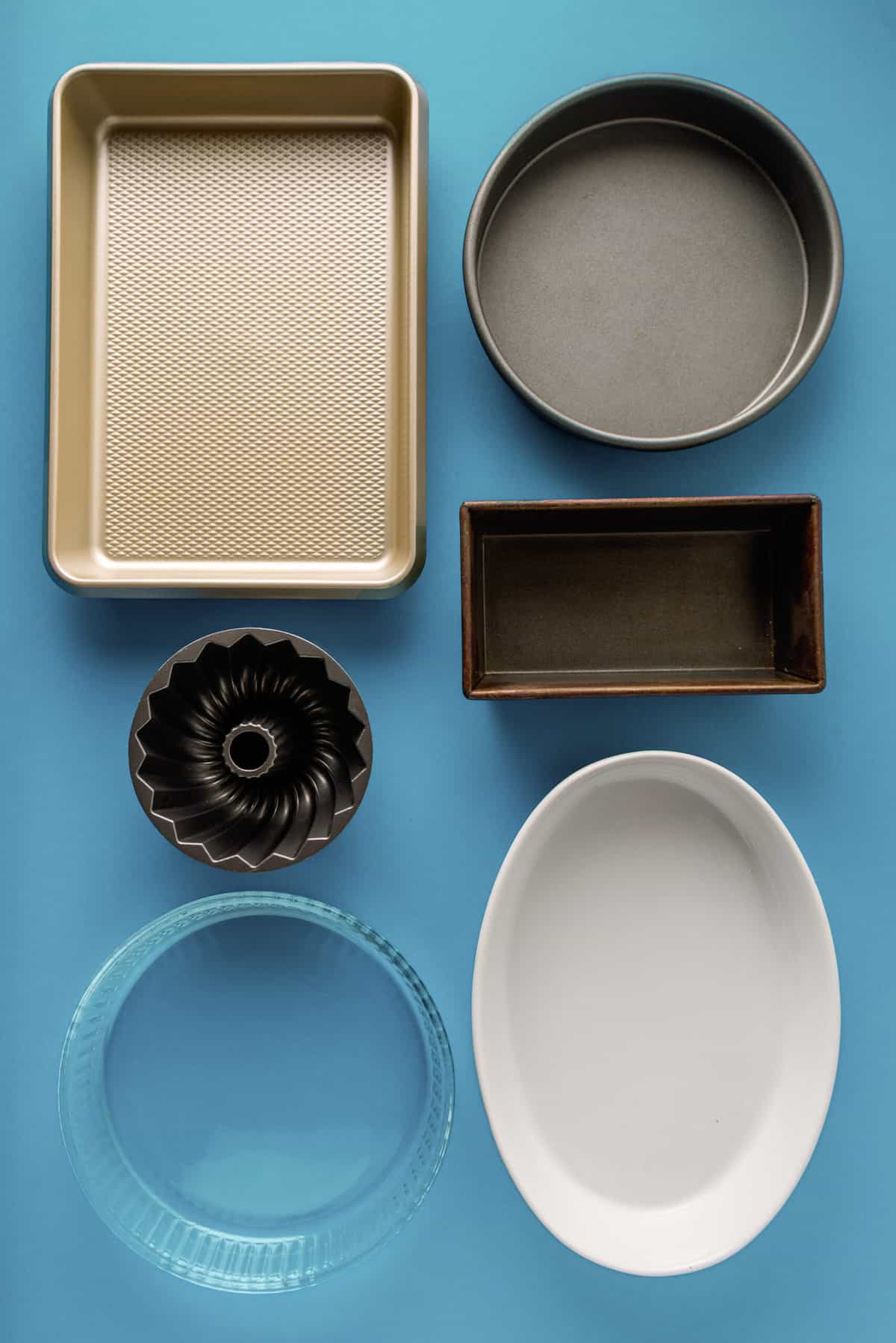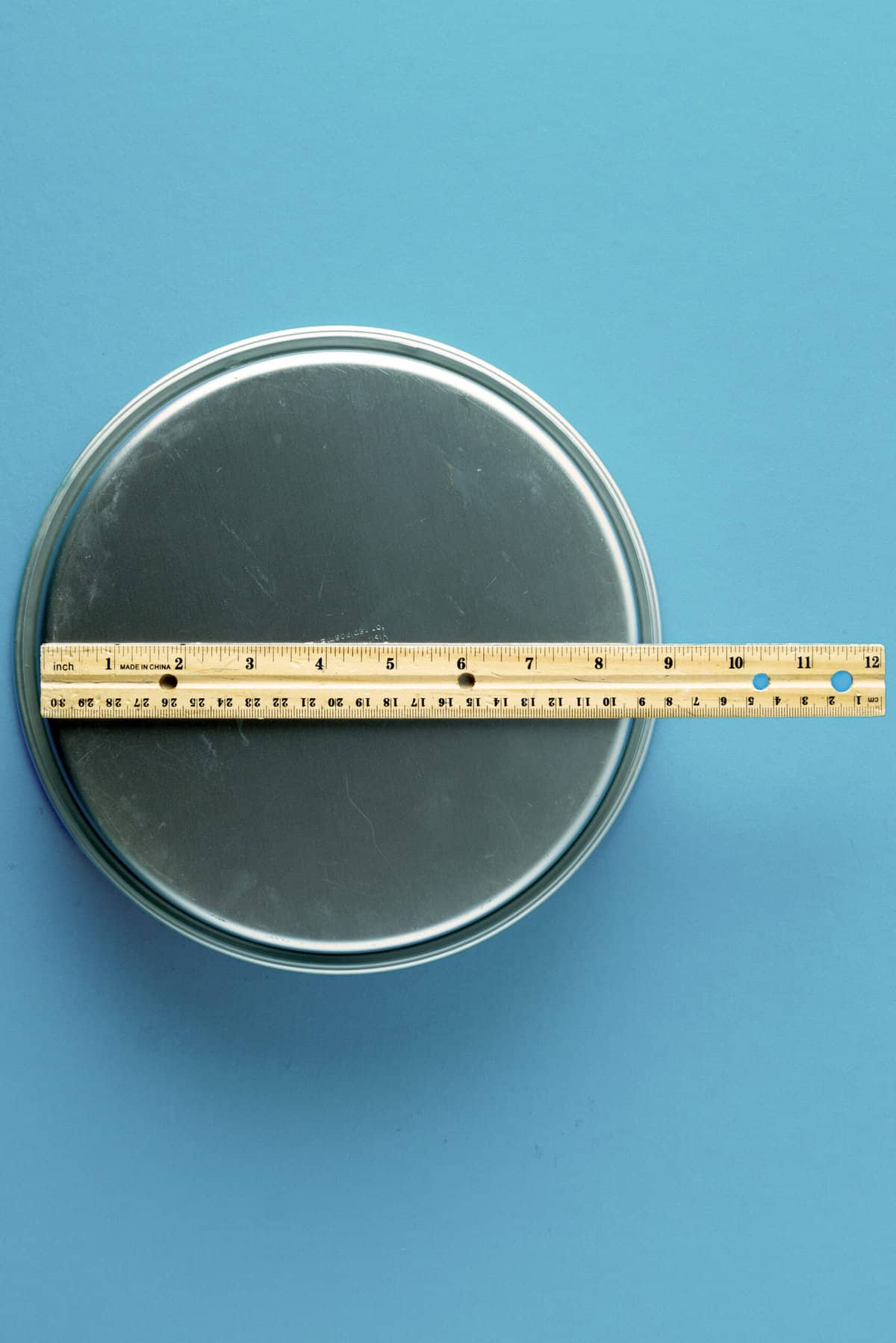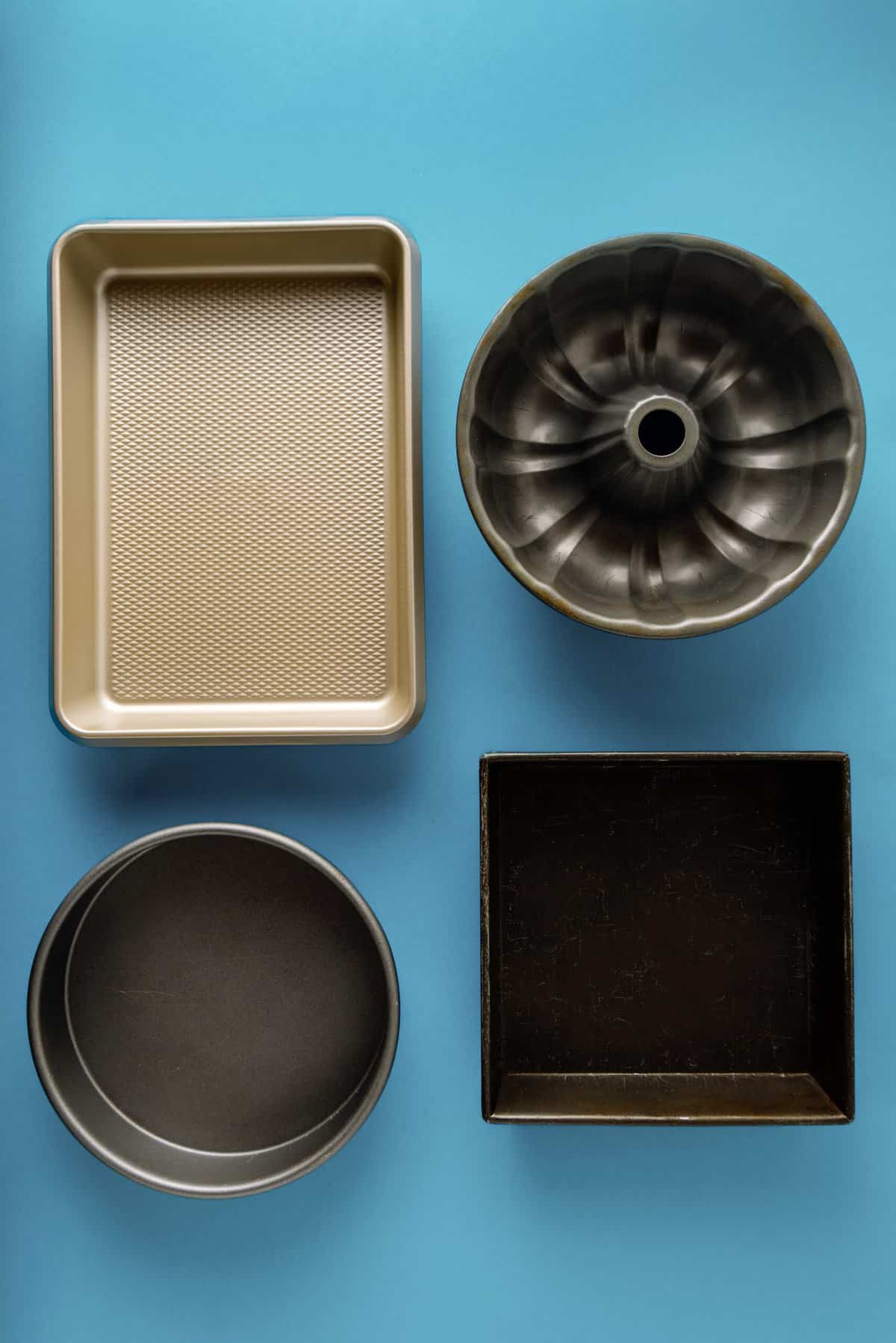Do you need a pan for a recipe that you don’t have in the cupboard? Can you switch one dish out for another? Our baking dish and casserole conversion guide will help take away the guesswork.

Pin this recipe now to save it for later
Pin RecipeBaking Dish and Casserole Conversion Guide
We’ve all been there—your 8×8 square pan may already be full of brownies, and you need it to make a casserole. Or you want to do a sheet cake with a recipe that tells you to use 9-inch cake rounds. It’s impossible to have every dish for every occasion! It can feel overwhelming to figure out how to make substitutions. But don’t worry, we’ve rounded up some tips below to help when you’re in a pinch.

How to Measure a Dish or Pan
First things first, let’s figure out how to measure the size of a pan. There are a few easy ways to do this:
- Look at the bottom of the pan. This is the simplest way to determine the dimensions of your pan or dish. Often the dimensions or capacity is shown on the bottom.
- Manually measure your dish. If your pan doesn’t show the dimensions, you can use a tape measure to find out the dimensions of the pan. You’ll want to measure the dish from inner rim to inner rim.
- Determine volume. A quick way to find out the volume of your pan or dish is to pour water from a measuring cup into the dish, filling it to the top. Make sure you keep track of how many cups you’ve poured in! Now you’ll know how much the dish can hold (or in other words, its capacity).
Know Your Standard Baking Sizes
Here’s a list of some familiar and commonly sized baking dishes you may already own. For baking, you’ll have the best success with 2-inch deep pans when you want to convert a recipe.
- 9” x 13” x 2”
- 8” square and/or 9” square (2” deep)
- 8” round and/or 9” round (2” deep)
- 9” (10-cup) or larger Bundt

Tips for Success
- Using 2-inch deep dishes and pans for baking will give the best results.
- Measure the bottom surface area of pans so you can figure out which pans will substitute best for one another.
- A recipe calling for a 9” square pan can be baked in an 8” x 12” oval casserole as-is, or it can be increased by 50% and baked in a 9” x 13” pan.
Quick and Easy Conversion Chart
| Dimensions | Capacity |
| 9x5x3 loaf pan | 2 quarts |
| 8x8x2 square pan | 2 quarts |
| 9x9x2 square pan | 2 1/2 quarts |
| 11x7x2 rectangular pan | 2 1/2 quarts |
| 9x13x2 rectangular pan | 3 quarts |
| 14x10x2 rectangular pan | 4 quarts |
FAQs
A casserole dish can be various sizes, including 9×13, like a traditional baking dish, but it’s sometimes round or oblong. A baking dish is sometimes called a casserole dish. A baking dish is always a casserole dish, but a casserole dish is not always a baking dish. Sounds complicated, but the main takeaway is that you can swap dishes based on their size and volume and don’t have to worry too much about the actual shape.
The area of a 9×13 pan is 117 square inches. The area of an 8×8 pan is 64 square inches, or close to half that of a 9×13 pan. This means you can scale a recipe down from a 9×13 pan to an 8×8 pan just by halving the recipe.
An 8” square pan and a 9” round pan can be used interchangeably for cake and bar (or brownie) recipes. A recipe written for a 9×13” pan can also be made in two 9” round pans, one 9” round and one 8” round, or two 8” round pans.









I am trying to find out how to take a regular recipe and make it in an Air fryer. And no I do not have any of those kind of pans at all. Thank you.